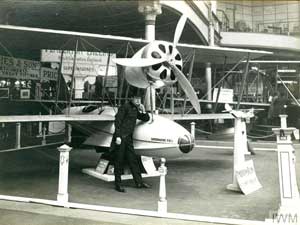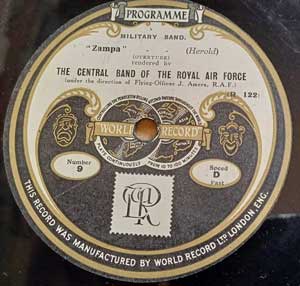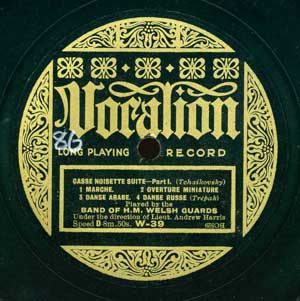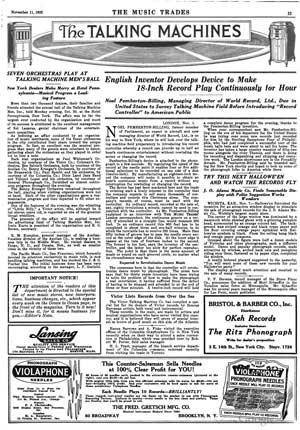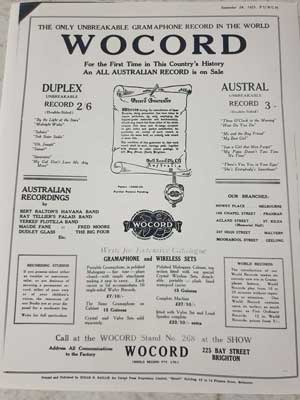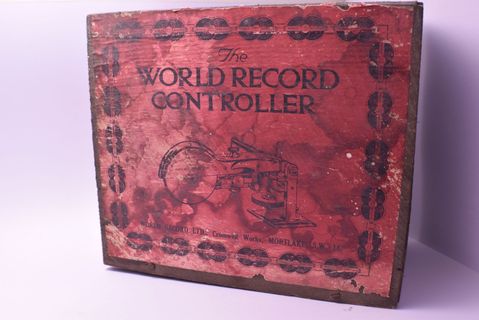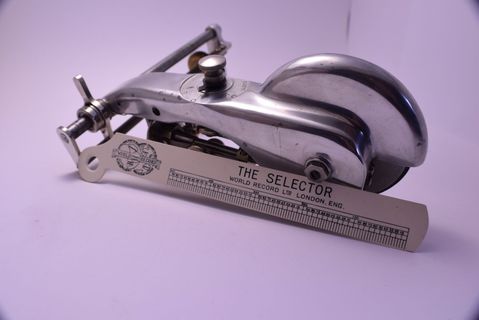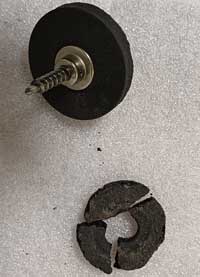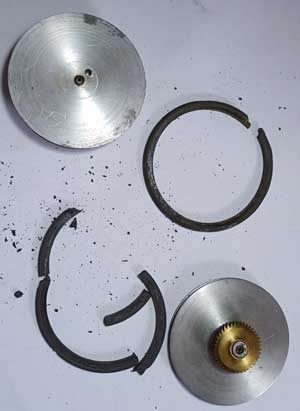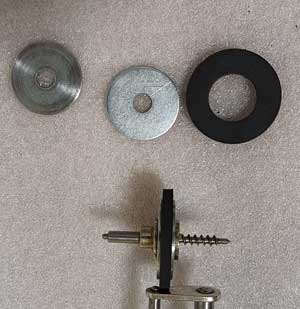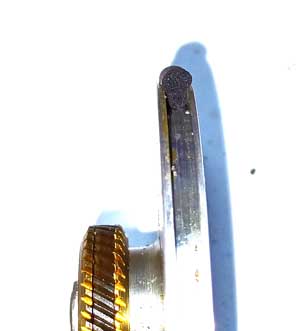NOEL PEMBERTON BILLING (31 Jan 1881 – 11 Nov 1948)
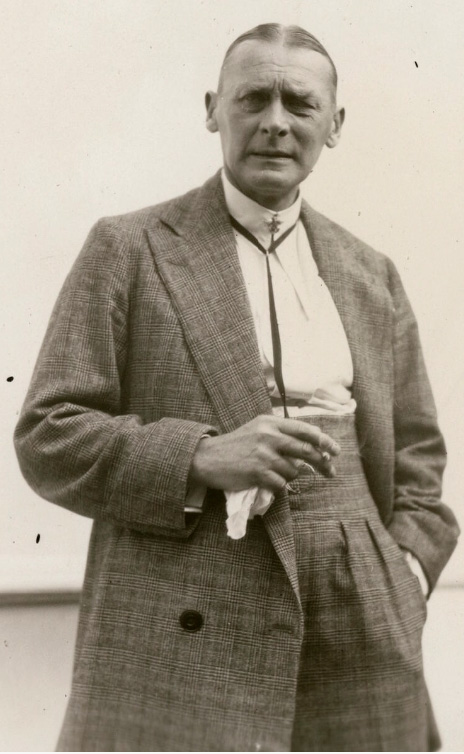
..and quite the colourful character he was too...
- At 13, he stowed away on a ship, ending up in South Africa where he joined the mounted police. He was a boxer, an actor and he fought in the Second Boer War (1902)
- Returning to England he started a garage and designed different prototypes of aeroplanes as well as a flying boat ‘Supermarine’
- During the War he joined the Royal Naval Air Service
- 1916, he was elected MP for Hertford and became a thorn in the side of “the establishment”. He championed the establishment of an independent Air Force, rallied against German influence in Parliament, challenged fellow MP’s to boxing in public for charity and he was even ejected from the House of Commons
- While an MP, Billing founded and edited a weekly journal, The Imperialist (Vigilante in 1918), advocating equal voting rights for men and women and electoral reform. At the same time advocating to promote anti-Semitic conspiracy theories. The journal included attacks on "Jews, German music, Pacifism, Fabianism, Aliens, Financiers, Internationalism, and the Brotherhood of Man". He wrote articles claimed that the Germans were blackmailing "47,000 highly placed British perverts". He claimed Germans planned on "exterminating the manhood of Britain" by luring men into homosexuality and paedophilia. He even hinted at the PM’s wife, Margot Asquith being a lesbian
- He published an article, "The Cult of the Clitoris", implying actress Maud Allan was a lesbian. This led to a sensational libel case, at which Billing represented himself and won
- He retired from the House of Commons in 1921
All this before he even invented the World Record Controller.
THE WORLD RECORD CONTROLLER
The very first longer-playing flat records with speeds measured in inches per second rather than revolutions per minute.
1922, Noel Pemberton Billing invented a recording process using Constant Linear Velocity (CLV). Instead of the usual 78rpm rotation which only allowed for 3-4 minutes of sound from a 10”-12” record. His records could record over 17min on a 12” record with claims of an 18” disc playing for an hour.
HOWEVER, a controller device was needed to alter the speed of the revolving table. This device was granted full patent on Oct 3rd 1923. The device was made by Garrard
In his own words:” … there is the same amount of music or sound on each grooved circle, no matter what its circumference may be”
Basically, the controller slows the turntable rotation at the start of the record and speeds up as it travels to the centre. This ingenious device did work but was clunky and difficult to set correctly. It was noisy and prone to failure.
A doomed project, as the records were still being cut “Acoustically” and the sound quality, wanting. The masters would have been a nightmare to produce for the recording engineers. The music Billings chose to release was questionable being mostly military bands
Billing still managed to sell the idea and started producing records in December 1922. He even sold the idea to Vocalion who produced a whole line of these now very rare CLV records.
He then went to New York to sell the idea to the Americans but failed. In 1923, he applied for another patent for a flexible and unbreakable disc record called ‘Fetherflex’. The venture failed
That same year, Pemberton Billing immigrated to Australia, to perhaps escape his creditors. He founded World Record(Australia) Pty. Ltd. in Melbourne. By Nov 1924 they were producing records from masters Billings had acquired in the States from the Emerson Phonograph Company.
The first recording made by World Record (Australia) was released in July 1925, and featured Bert Ralton’s Havana Band. They were producing records by touring American Dance Orchestras and local musicians too, like the Big Four Vocal Quartet, Fred Moore and Dudley Glass.
Pemberton Billing then set up a radio studio called 3PB (After himself), which only played his records. The businesses all failed and by January 1926, Noel Pemberton Billing returned to England
In 1929 he had written a play called "High Treason" which was made into a now, historically famous film. It initially was to be a silent film but sound was added soon after shooting started.
He was responsible for “Duophone" unbreakable records and in 1936 designed the miniature “LeCoultre Compass” camera. “In 1948, he devised the ‘Phantom’ camera to be used by spies. It never entered production, but its rarity led one to sell for £120,000, a record price for any camera, in 2001”
- Here is a link to the BFI web site which holds a film of the man "curious silent film offers a glimpse inside the mind, and the country home, of a notorious politician and inventor"
- Noel Pemberton Billing and the Cult of the Clitoris
- In 1929 he had written a play called "High Treason" which was made into a now historically famous film. It initially was to be a silent film but sound was added soon after shooting started
- Here is a link to a World Record Discography on the excellent Michael Thomas' Website
- Another list of Vocalion Long Playing Records. Scroll down to the W20 Series
- World Record Controller Pamphlet on the Graphonogram site, scroll down to #30
- BLOG-the early record industry in Australia – part 2
- A few painful Youtube Videos #1 #2 and #3 of the World Record Controller in action
* All Edison style cylinder phonograph records were recorded at CLV; the same amount of sound recorded on each rotation, possibly one reason why Edison stuck with cylinders until 1929 *
* There are rumours of CLV records being produced in Korea as well as by the Nitto Company in Osaka *
Notes on restoring the World Record Controller:
- 100+ years on, both rubber wheels will have petrified and perished. I tried several grades of rubber but ended up using the softest I could find.
- For the small wheel which rides on the edge of the turntable, I used a 34mm diameter rubber which I sandwiched between some large washers. As we all know, windup motor turntables rarely turn totally true so even a small wobble will have the small wheel skipping, rubbing or missing the turntable all together. So I emphasise, the rubber needs to be very soft to compensate for any wobble.
- The larger wheel had to be dug out and again I replaced it with an ultra-soft rubber. This wheel runs on top of the record and acts as a friction turning rubber wheel which slows down the turntable at the start of the record and speeds it up at the end.
- Looking closely at the old rubbers reveals a lot of flat areas where the rubber skidded leaving flat friction wear. The new rubber is so soft that if I leave the wheel sitting on the record, it flattens out.
- The mechanism itself is a wonderful bit of engineering built by Garrard, to last.
- The Controller played 4 speeds at the turn of a dial, ABC & D. The records were marked to match.
- I haven’t come across any of the Australian World Record releases yet. If anyone out these has any to share, please contact me:
